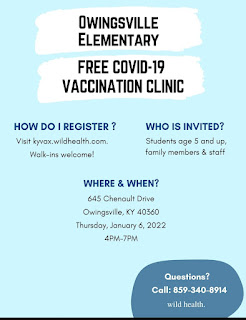 |
| Ky. Health News graph (virus cases based on initial, unadjusted reports); click on it to enlarge. |
By Melissa Patrick
Kentucky Health News
As every metric used to measure the coronavirus in Kentucky kept rising over the weekend, the good news is that the number of Kentuckians getting newly vaccinated was much more than the number of new cases.
"We are seeing more vaccinations over this last weekend than we have seen in a long time and at every state of the vaccination process," Gov. Andy Beshear said at his weekly pandemic press conference.
The number of cases reported in Kentucky during the Monday-through-Sunday reporting week is the highest it's been in nine weeks, at 15,875. "We are certainly not headed in the right direction," Beshear said.
The state reported 4,891 new cases of the virus since Saturday, raising the seven-day rolling average to 2,345 per day, up 15% from Friday's average.
But over the weekend, Beshear said, 15,117 Kentuckians received a first dose of a vaccine -- more than three times the number of new cases. He said 18,189 became fully vaccinated and 45,137 got a booster shot. So far, 2.7 million Kentuckians, or 61% of the total population, has received at least one dose of a vaccine.
Beshear urged Kentuckians in their 40s to get their vaccinated, noting that 12 of the deaths reported since Saturday were in that age group, 68% of which have received at least one dose of a vaccine.
Of Monday's cases, 23% are in people 18 and younger.
So far, Beshear said no cases of the Omicron variant have been reported in Kentucky, but "it would almost be surprising if it was not here." So far, the variant has been detected in at least 18 states, The New York Times reports.
The share of Kentuckians testing positive for the virus in the past seven days is 9.13%. This weekly rate has increased steadily for five weeks. It has plateaued lately, perhaps because more people have been getting tested.
The state's seven-day infection rate is 47.96 daily cases per 100,000 residents, up from 41.73 on Friday. Counties with rates more than double that rate were Cumberland, 133.9; Powell, 126; Robertson, 108.4; Lawrence, 100.7; and McLean, 96.2. The state's red zone, for more than 25 daily cases per 100,000 residents, considered a high level of transmission, includes 110 of the 120 counties. The remaining 10 counties are in the orange zone, for more than 10 to 25 cases, considered substantial transmission.
Beshear said these increases are largely driven by the highly contagious Delta variant, waning immunity and people's behaviors. "With that much Covid heading into the holidays, we need to be careful," he said.
He offered several tips to stay safe, including encouraging eligible Kentuckians to get vaccinated or to get their Covid-19 booster shot as soon as possible; to not attend a gathering if you are sick; to wear a mask indoors; and to keep attendance numbers at at gatherings low.
Beshear also advised schools and all businesses where people are in close contact to require masks, and said it's time for communities and businesses to "double-down" on encouraging vaccinations. He no longer has authority to impose mask mandates, because the legislature took that power from him.
Kentucky hospitals reported 1,077 Covid-19 patients Monday, up 105 from Friday; 310 of them in intensive care (up 26); and 168 on mechanical ventilation (up 12). In the last month, hospital cases are up 52%.
Beshear displayed graphs showing all of the hospital numbers are rising, but said there are no immediate concerns that hospitals could be overwhelmed.
"Everybody has overall concern because of where staffing is and and seeing cases starting to go back up and hospitalizations," he said, "but no one is sounding the alarm yet."
Seven of the state's 10 hospital readiness regions are using more than 80% of their intensive-care beds, with six of them over 90%.
The state reported 198 more deaths since Saturday, with 63 of them reported Monday. The pandemic death toll is now 11,289. Since Saturday, 17 of the deaths were in people under 50, and one of them was 23.
In other pandemic news Monday:
The University of Kentucky now has 90% of its campus community either partially or fully vaccinated, says a letter from President Eli Capilouto. That includes 87% of students, 97% of faculty, 93% of staff, and 93% of UK HealthCare.
Capilouto urged Kentuckians to get a booster and flu shot, and noted that UK HealthCare has opened a Covid-19 vaccination clinic for children 5-17 at 245 Fountain Court in Lexington.
He noted that despite courts' blockage of President Biden's vaccination mandate for facilities that receive payments from the Centers for Medicare and Medicaid Services (virtually all of them), Covid-19 vaccines remain mandatory for UK HealthCare employees, unless they have an exemption.
Beyond Kentucky, new guidelines for international air travel now require all travelers two years of age or older who are returning to the U.S. to show proof of a negative Covid-19 viral test performed within one day of departure, to get tested three to five days after they return, and to self-isolate and get tested if they develop symptoms. All unvaccinated travelers are advised to quarantine for seven days.































